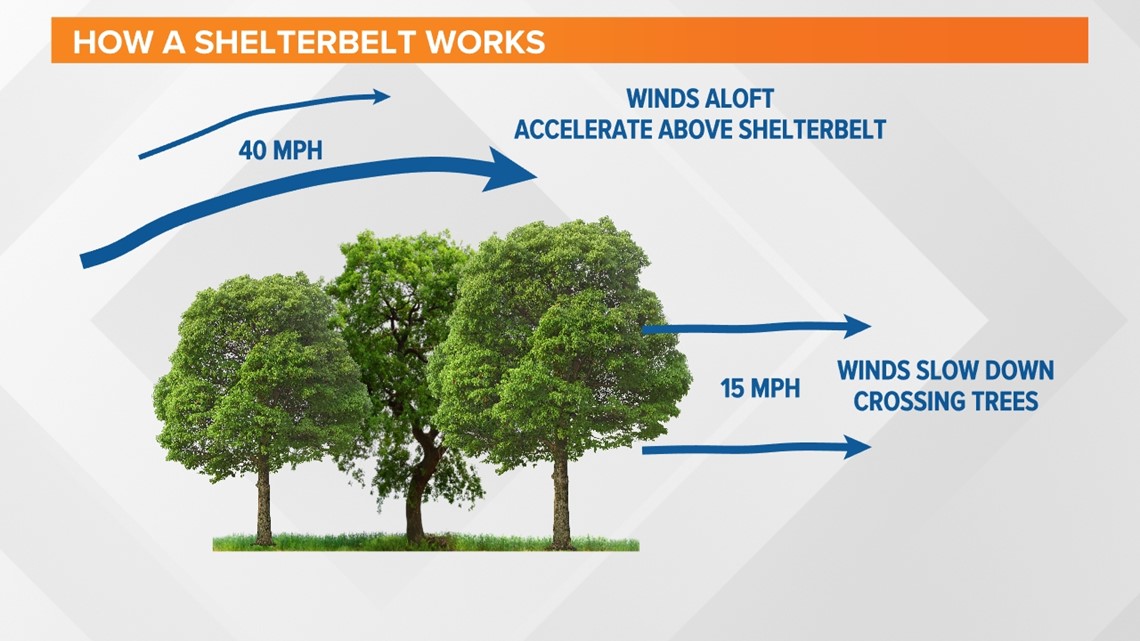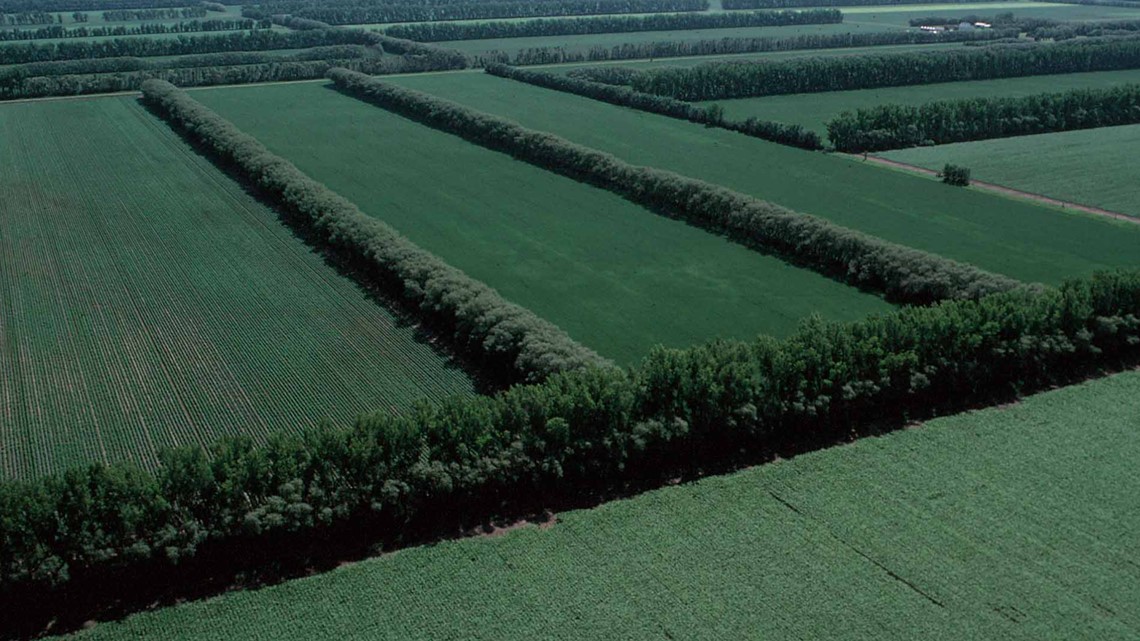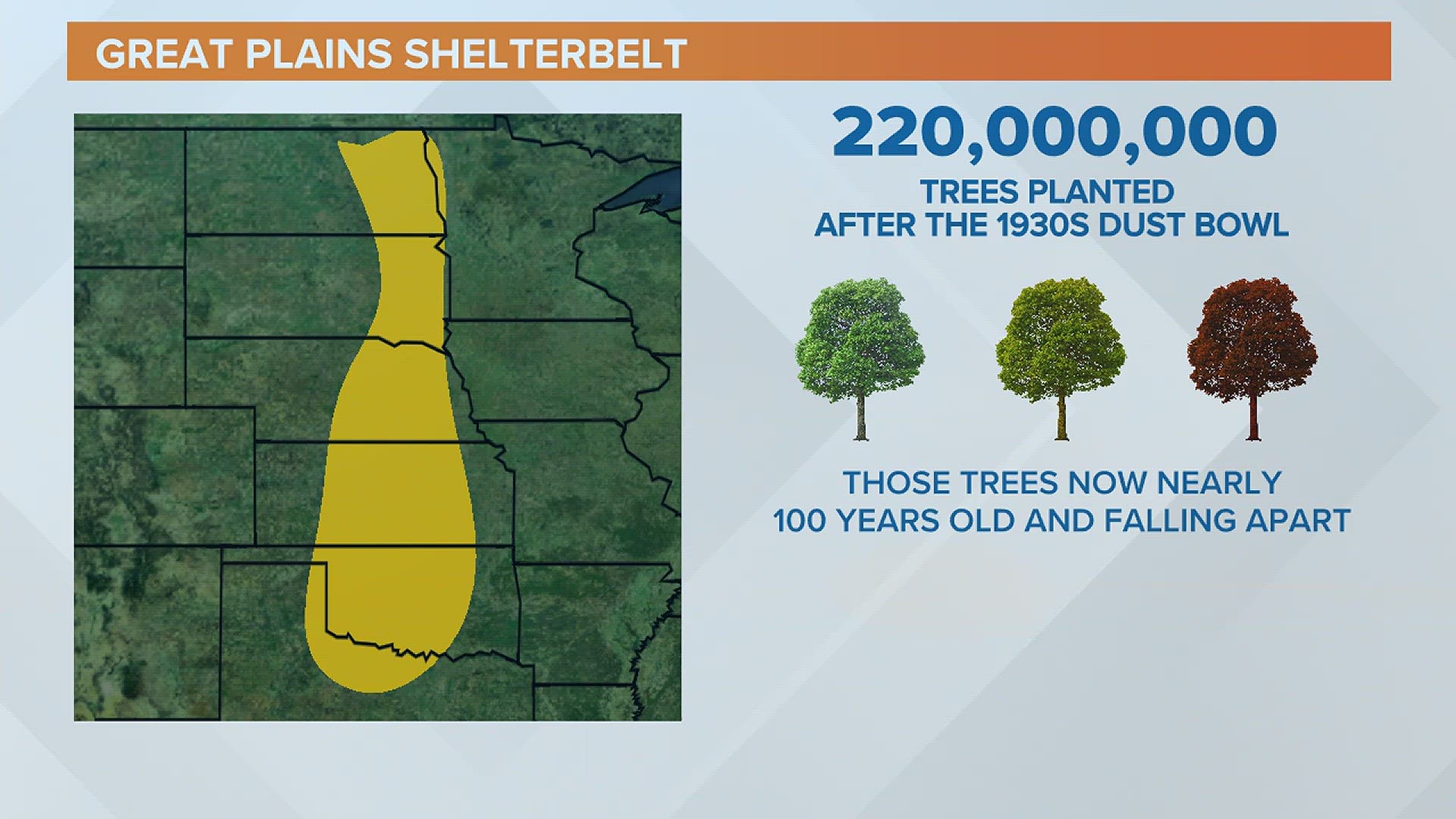MOLINE, Ill. — The deadly dust storm that recently took the lives of seven people in central Illinois is a good reminder that the weather can change in an instant, even with a crystal-clear blue sky. A combination of dry, recently tilled soil and very strong winds came together at the right time to wreck chaos on a stretch of Interstate 55 south of Springfield. Many are left asking, and rightfully so, if this could have been prevented.
That's what we will dive into for today's Ask Andrew.
The dust bowl of the 1930s really brought to light some of the problems with land management by the earlier settlers of the region. Severe drought and strong winds created widespread dust storms throughout the Great Plains. It also brought about a new government program that aimed to protect these same areas.
In 1935, the U.S. Forest Preserve planted more than 222 million trees creating 18,500 miles of what are known as "shelterbelts".


A shelterbelt works by lining up trees and shrubs in rows to form a barrier, reducing ground wind speeds. The concept is widely used today, whether it be surrounding a home or next to a major interstate. It's even used to help control and cut down on blowing snow during the winter months!


The problem today is many of these shelterbelts are aging, significantly so. Multiple periods of drought have killed off a significant amount of the original shelterbelts.
There have also been significant changes to farmland in order to accommodate center-pivot irrigation systems and field consolidation. The Natural Resource Conservation Service has the responsibility of maintaining existing shelterbelts and soil conversation efforts today, with around 20 million trees and shrubs planted annually throughout the Great Plains.


There is still a lot of work left to be done in order to fully restore and even add more shelterbelt areas across the U.S., leaving some concerned that another dust bowl episode may not be that far away, especially with growing severe drought across these same areas this year.
Could a shelterbelt have prevented the tragedy we experienced in central Illinois? Hard to tell. It really was the perfect mix of many different ingredients coming together and the timing, of course. Certainly couldn't hurt to think about possibly adding some sort of protection near these major travel routes, though!
Have a question you would like me to answer for an upcoming Ask Andrew segment? Submit it, here.

